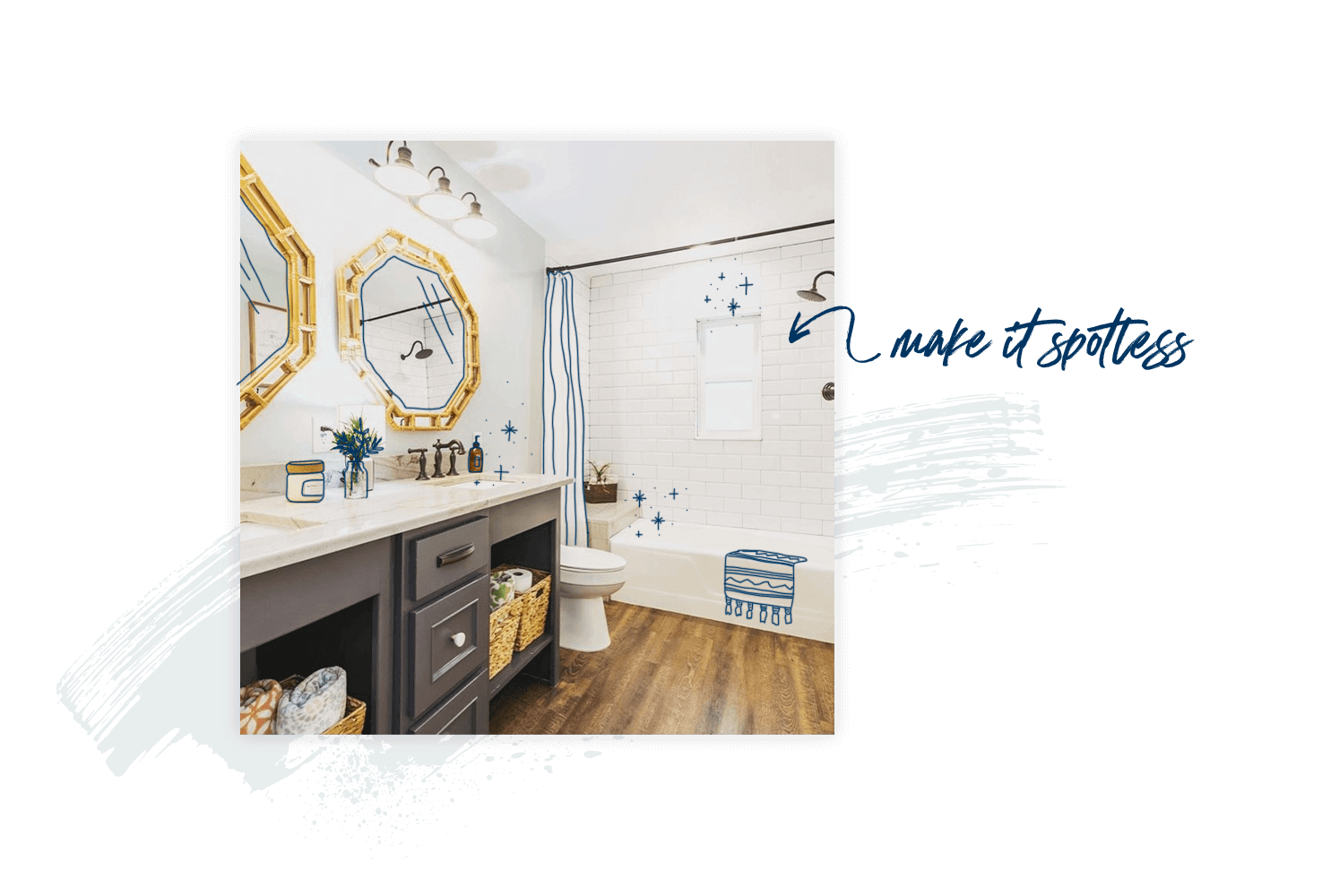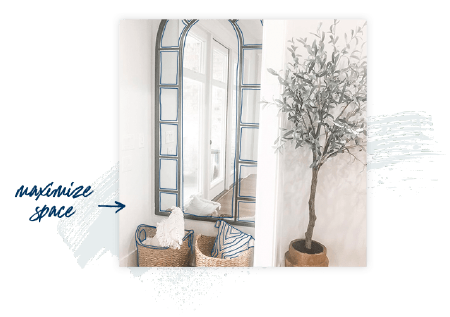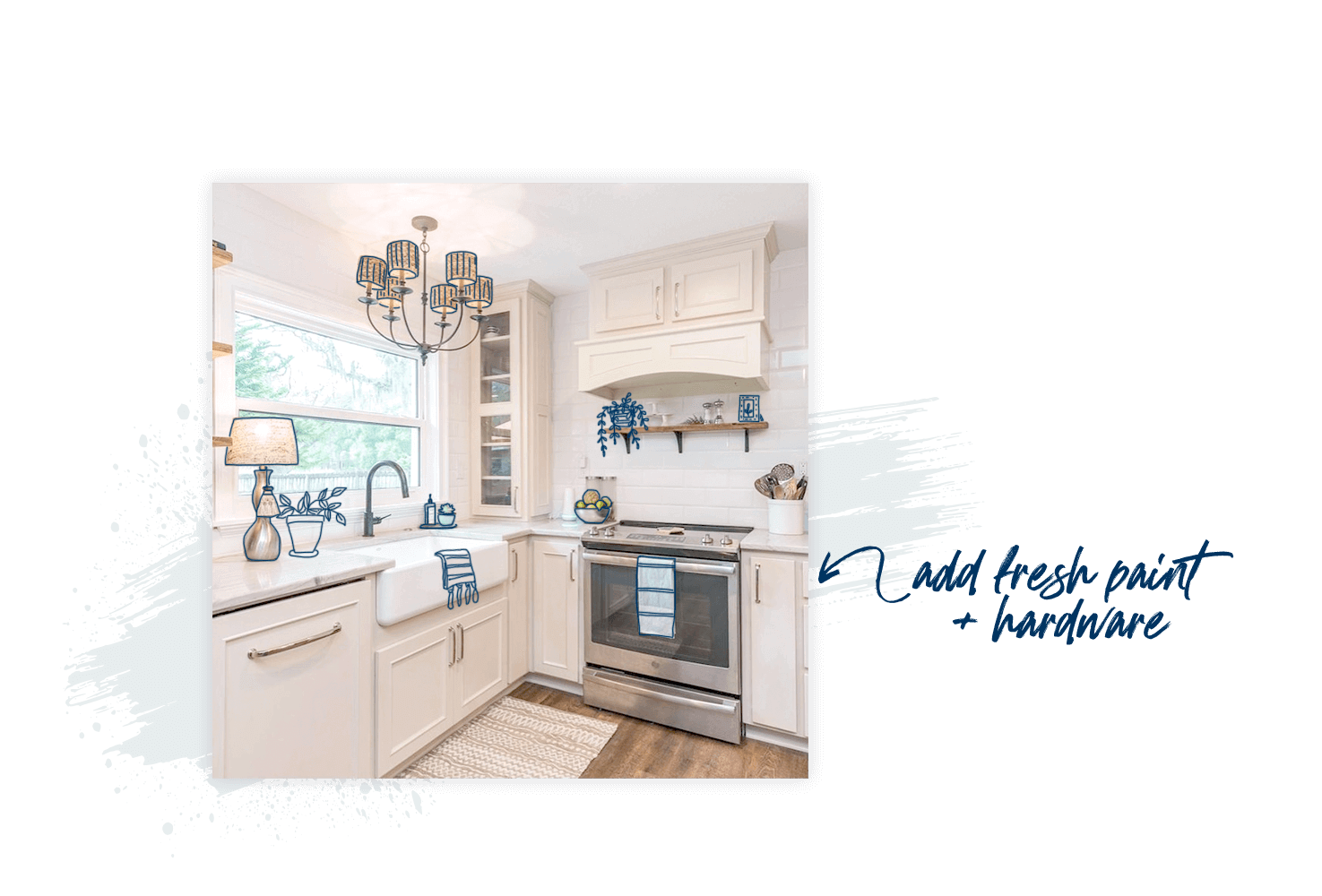
Stage Your Home
Look at you go! Now you’re ready to get your home looking its best to appeal to potential buyers. Sure, you can dust your shelves and vacuum your carpets. But is that enough? Probably not. What you really need to do is stage your home.
Staging is the art of giving your home a makeover. Okay, maybe not a full makeover—but it should look fresh and new. You do this by highlighting the positives, downplaying the negatives, making rooms look bigger, and giving your home a high-end feel.

Why Stage?
Many real estate agents emphasize that staging a home has a dramatic impact on getting it sold faster. Some studies have shown how staging can even increase how much money buyers offer. And it makes sense, right? Who wants to buy a house that’s in shambles and smells weird? If your house looks its absolute best, buyers will be more motivated to shower you with competitive offers.
Some studies have shown how staging can even increase how much money buyers offer.
Get a Home Inspection
Wait a sec. Why should you (the seller) get a home inspection? Isn’t that a task for buyers who want to avoid a bad deal? Actually, it’s a worthwhile tool for home sellers too. A pre-listing inspection might cost a few hundred dollars, but it’s money well spent.
Why? First, it can help you find any hidden issues before you put your home on the market. Hidden issues are not a surprise you want in the middle of the home sale, right? It also keeps buyers from demanding big bucks at the negotiation table or, worse, from skipping out on the deal at the last minute.
What’s Included in a Home Inspection?
A home inspection usually includes:
- Electrical, plumbing, heating and cooling systems
- Walls, ceilings, floors, windows and doors
- Roof, attic and visible insulation
- Foundation, basement and structural components
How It Works
A home inspection is like a medical checkup for your house—minus the hospital gown and stethoscope. A qualified home inspector will examine every access point of your home to see if there are any health and safety issues. Afterwards, you’ll receive a detailed report outlining what works, what doesn’t, and recommendations for maintenance and repair.
Don’t worry about checking every single to-do off your list, but do pay attention to big-ticket issues. Your agent can help you sort through the findings, but the roof and electrical, plumbing and HVAC systems typically take priority. If you have room in your budget, take care of those before planting the “for sale” sign in your yard.
How to Find a Home Inspector
To find a good home inspector, you can get recommendations from your real estate agent or family and friends. You can even run a simple search online through the American Society of Home Inspectors. Whatever you do, make sure your inspector has plenty of experience and is someone you feel you can trust.
The home inspection will give you a heads-up about any major repairs you need to handle before listing. If you don’t want to deal with the repairs yourself, you can notify buyers of whatever issues come up and adjust your listing price accordingly.
Staging Tips for Every Budget
The visual impact of your home has the power to attract buyers or immediately turn them away. Let’s focus on how to make your home look as appealing as possible.
Must-Do's for Every Room
Before you dig into the details, you have a little housekeeping to do. Clear the slate with these heavy-hitting tasks:

- Scrub every surface until it shines.
- Minimize clutter to maximize space.
- Pay a pro to deep clean rugs and carpets.

To really make rooms look their best, apply a fresh coat of paint.

Where to Focus Your Staging Wow Factor
Once you’ve tackled those housekeeping items, decide where to invest the majority of your staging budget. Of course, where to spend all comes down to how much of a staging budget you have (we’ll cover a budget range from zero to max), but these three areas are usually the best places to focus on:
- Living room
- Master bedroom and bath
- Kitchen and dining room
Zero Budget
- Living room: Arrange seating with conversation—not channel surfing—in mind. Borrow pieces from other rooms if needed.
- Master bedroom and bath: Go minimal by storing bulky furniture. (That means you, treadmill!) In the bathroom, straighten up your linen closet and hide the hamper.
- Kitchen and dining room: Clear off the countertops. Set the table with your best dishes, flatware and linens.
Mini Budget
- Living room: Add a colorful vase of flowers to your mantle or coffee table. Update lighting fixtures. Buy new throw pillows for your sofa.
- Master bedroom and bath: Create a spa-like feel with fresh new bedding and throw pillows. Showcase the bathroom with fluffy new towels and update the faucets and cabinet handles.
- Kitchen and dining room: Refresh cabinets with new paint and handles. Install an entry-level backsplash. Paint brass light fixtures with an updated color.
Max Budget
- Living room: Bring worn-out flooring up to standard with the rest of the neighborhood. Replace tired furniture or freshen it up with a tasteful slipcover.
- Master bedroom and bath: Add window treatments. Hire a pro to organize your closet. Upgrade the bathroom with granite countertops and ceramic tile flooring.
- Kitchen and dining room: Upgrade to stainless appliances and natural stone countertops. Buy a statement light fixture to hang over your dining table.
Budget for Improvements
Those are just some ideas. Keep in mind that every home is unique and what works for one home may not work for yours. Before you get to work, sit down with your agent and come up with a plan. (And by plan, we mean budget.) Then download the Home Improvement Worksheet to keep your budget on track.


